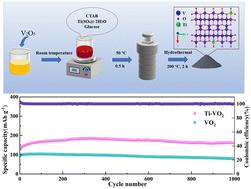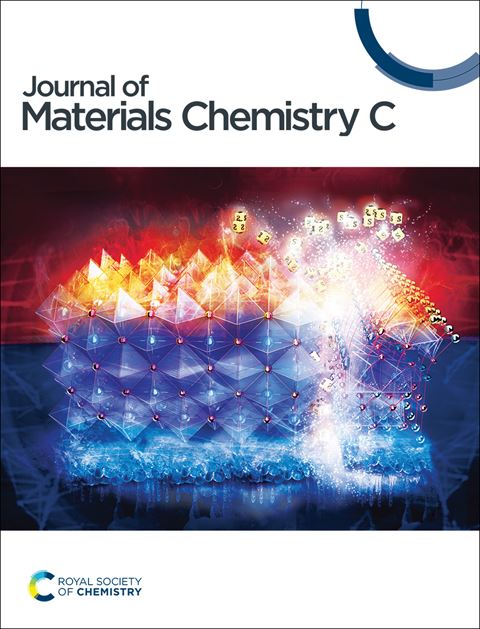Enhancing the stability of zinc-ion batteries with titanium-doped VO2 cathode materials
IF 5.7
2区 材料科学
Q2 MATERIALS SCIENCE, MULTIDISCIPLINARY
引用次数: 0
Abstract
Vanadium-based oxides, due to their large specific capacity and relatively stable crystal structures, are one of the promising candidates as cathode materials for aqueous zinc-ion batteries (ZIBs). However, their low electronic conductivity and sluggish kinetics of electrochemical reactions severely hinder their practical applications. Herein, Ti4+-doped VO2(B) materials have been synthesized by a hydrothermal method and utilized as cathode materials for aqueous ZIBs. The incorporation of Ti4+ alters the crystal nucleation mechanism, substantially enlarges the material's specific surface area, and concurrently improves its conductivity and the diffusion coefficient of Zn2+. Ti–VO2 demonstrates a specific capacity of 443.7 mA h g−1 at 0.1 A g−1 and retains a reversible capacity of 161.5 mA h g−1 after 1000 charge per discharge cycles beyond 10 A g−1. The utilization of ex situ characterization techniques confirms the Zn2+/H+ co-intercalation mechanism and elucidates the irreversible structural alterations occurring in Ti–VO2 during charge and discharge processes. This study provides new ideas for the application of vanadium-based materials and can provide a reference for future research and development work in the field of vanadium-based ZIBs.

用掺钛 VO2 阴极材料提高锌离子电池的稳定性
钒基氧化物具有较大的比容量和相对稳定的晶体结构,是水性锌离子电池(ZIBs)阴极材料的理想候选材料之一。然而,其较低的电子电导率和迟缓的电化学反应动力学严重阻碍了其实际应用。本文采用水热法合成了掺杂 Ti4+ 的 VO2(B) 材料,并将其用作水性锌离子电池的阴极材料。Ti4+ 的加入改变了晶体成核机制,大大增加了材料的比表面积,同时提高了材料的导电性和 Zn2+ 的扩散系数。在 0.1 A g-1 的条件下,Ti-VO2 的比容量为 443.7 mA h g-1,在 10 A g-1 以上的条件下,经过 1000 次充放电循环后,其可逆容量仍为 161.5 mA h g-1。利用原位表征技术证实了 Zn2+/H+ 共掺杂机制,并阐明了 Ti-VO2 在充放电过程中发生的不可逆结构变化。这项研究为钒基材料的应用提供了新思路,可为今后钒基 ZIB 领域的研发工作提供参考。
本文章由计算机程序翻译,如有差异,请以英文原文为准。
求助全文
约1分钟内获得全文
求助全文
来源期刊

Journal of Materials Chemistry C
MATERIALS SCIENCE, MULTIDISCIPLINARY-PHYSICS, APPLIED
CiteScore
10.80
自引率
6.20%
发文量
1468
期刊介绍:
The Journal of Materials Chemistry is divided into three distinct sections, A, B, and C, each catering to specific applications of the materials under study:
Journal of Materials Chemistry A focuses primarily on materials intended for applications in energy and sustainability.
Journal of Materials Chemistry B specializes in materials designed for applications in biology and medicine.
Journal of Materials Chemistry C is dedicated to materials suitable for applications in optical, magnetic, and electronic devices.
Example topic areas within the scope of Journal of Materials Chemistry C are listed below. This list is neither exhaustive nor exclusive.
Bioelectronics
Conductors
Detectors
Dielectrics
Displays
Ferroelectrics
Lasers
LEDs
Lighting
Liquid crystals
Memory
Metamaterials
Multiferroics
Photonics
Photovoltaics
Semiconductors
Sensors
Single molecule conductors
Spintronics
Superconductors
Thermoelectrics
Topological insulators
Transistors
 求助内容:
求助内容: 应助结果提醒方式:
应助结果提醒方式:


